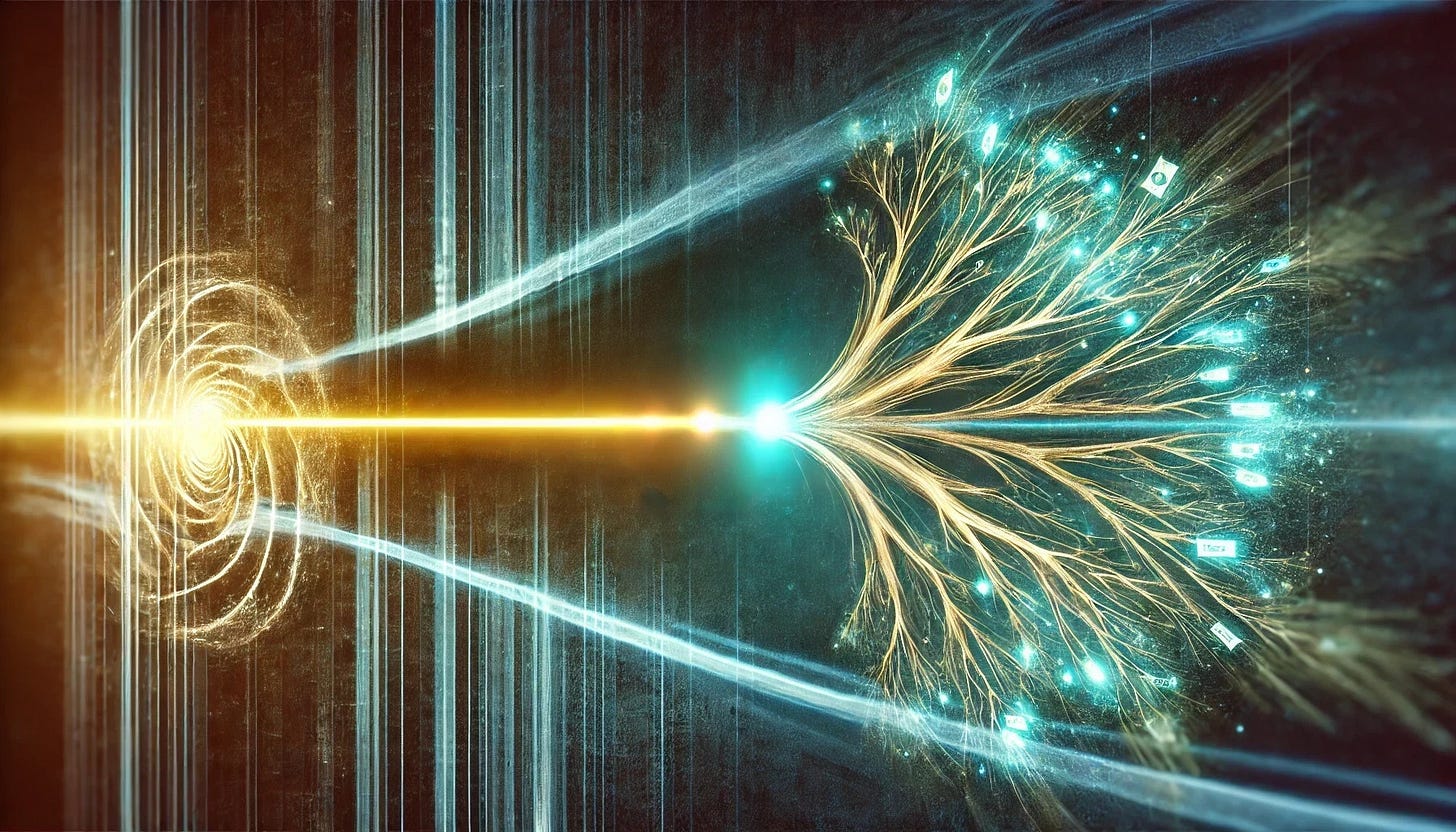Technological convergence and Convergence
Let me tell you some stories. Some of them will surely be part of our history in one way or another.
But first, let’s distinguish technological convergence from the convergence I’m going to talk about.
Let’s start by understanding what’s
Technological Convergence
Simpy put, technological convergence that when we humans create Technology A and Technology B, over time we combine both of them to make a new technology, Technology C.
In other words, we tend to merge together the technologies we’ve created to come up with new things.
For example, when we combined mobile phones with computers and the internet, smartphones were born.
But even before that, landline phones were combined with radio-broadcasting technology to create mobile phones.
What other examples come to your mind?
Because we use the same process all the time.
Although we’ll talk about technological convergence another time, that’s not what I’m calling
Convergence
We can say that convergence is the point where all plausible futures are born. It’s the now.
Let’s dig a bit deeper into this. First, let’s see what’s
A future
A future is our reality at some moment yet to come.
From now until that future, certain things must happen that haven’t happened yet.
For example, for us to have a stable colony on Mars, first we need a permanent base, and ships that can make regular trips, and yet before that the first human missions.
Of course, things don’t always go as expected. Many things can happen differently, and that means there are different futures.
Each future is different from the others. This is because from now to the time of any given future, the same things haven’t occurred.
To understand this better:
You could imagine a future by focusing on something in particular, for example:
What will the future be like when all cars drive themselves?
Or, what will the future be like when there are robots everywhere to help us?
The future in which both of these happen is different from the future where only one happens, which is different still from the future where neither happens.
Let’s visualize it as if it were a tree. We’ll call it
The tree of futures
Futures are like the leaves of a tree. One leaf is one future. A branch with many leaves has many futures that are similar to each other.
Each fork (a split in two) on a branch represents the moment that leads to different futures.
For every situation that can turn out differently, a new branch with many possible futures emerges from that point. There’s a decision or an event, something that changes, if we follow a branch or another from the fork.
It could be the outcome of a major sporting event, an election, the launch of a technology, or a war. If you change that event, the futures along each branch also change.
For example, on one branch you have the futures in which one political party wins an election, and on the other branch, the futures in which its main opponent wins. Those would be different, right?
Exactly.
Wait, but if every event that could turn out differently leads to a different future, that means there are a huge number of possible futures, right?
Yep, they are infinite.
And yet, only one of all those futures passes through convergence and becomes part of the past, permanently written into our history.
In the tree, all futures are possible, though some are more plausible than others.
What does it mean for a future to be plausible?
A future is plausible when it’s reasonable that it could occur.
It doesn’t matter if it’s sooner or later. The probability of it happening isn’t important either. What matters is that it’s reasonable for it to happen at some point because the conditions allowing it to happen either already exist or will exist.
For example, it’s not plausible that tomorrow, December 30th, 2024, we could travel between galaxies. There are many things missing for that to happen.
But it is plausible that tomorrow we could make significant progress in treating a disease that’s already under research.
If we extend the timeframe to a year or to five years, for example, there will be more things that could become plausible.
But that’s not the only factor.
Other elements, like society’s maturity, priorities, and so on, also make something plausible or not.
If nobody is interested in going to Mars, we won’t go there, even if there is everything that makes it possible ready.
In short, a future is plausible when all the necessary factors for something to happen are viable, as in the Mars example above.
Now let’s see it
All together
If we remember, convergence is the point where all plausible futures are born. It’s the now.
From the now, all possible futures emerge, and they are infinite. We can picture them like a tree in which, at each branch, events unfold differently, and every leaf represents a different future.
The now is where things actually happen. The events that occur determine which futures stop being possible and fade away from the tree of futures.
Those same events also become permanently recorded in the book of history.
That is convergence: this now, with that meaning.
Welcome to Futurostream, where we’ll travel beyond convergence to visit some plausible futures through stories.
Remember that the future is always written the same way. In the convergence. Today.
The first story will arrive in your inbox soon.
Great future!


